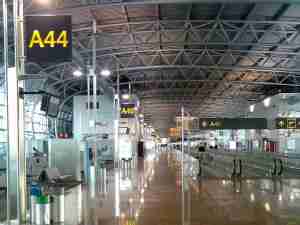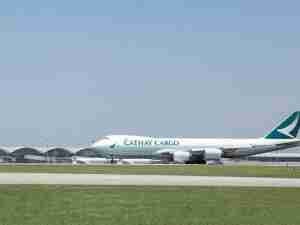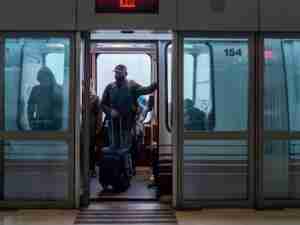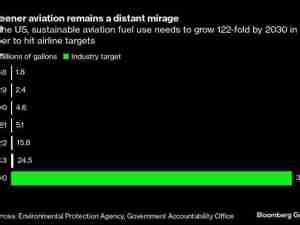Southwest Postpones Delivery of 67 Boeing 737 Max Jetliners
By: | Jun 23 2016 at 04:56 PM | Air Cargo
Southwest Airlines Co. will postpone delivery of 67 Boeing Co. 737 Max 8 aircraft by as many as six years, pushing $1.9 billion of spending on planes into the next decade.
The airline also plans to accelerate six 737-800 orders to next year from 2018 to help cover the already announced early retirement of its oldest 737s. The moves are the second shakeup of Southwest’s aircraft order book since 2013 and were unveiled in a presentation to investors Thursday.
The new schedule doesn’t change Southwest’s plans to take the first delivery of the Max 8, Boeing’s newest version of the 737, next year. The changes will help control capital spending as Southwest invests in technology updates over the next five years that will bolster its flight operations. The carrier will roll out a new domestic reservation system in 2017.
“It has nothing to do with the Max. The Max is a fabulous airplane and we will fly it in 2017,” Chief Financial Officer Tammy Romo said. “It really is shells, or the number of aircraft.”
Planemakers’ Risk
The moves underscore the risk for Boeing and Airbus Group SE as they introduce new, fuel-efficient versions of their 737 and A320 narrowbody models, the workhorses of the global airline fleet. The planemakers are also plotting an increase in singe-aisle production to take advantage of order books that are largely sold out through the end of the decade.
Southwest pioneered the low-cost carrier model that helped make the 737 into Boeing’s all-time best-seller. The airline is the largest operator of the aircraft as well as one of the largest buyers of the upgraded Max, with 200 orders. But Southwest also has become one of the biggest customers of cheap, middle-aged 737s coming on to the market as airlines around the world retrench or upgrade to newer versions.
The Dallas-based carrier has lined up dozens of used aircraft to make up for the early retirements of its so-called 737 Classic fleet, which it will park by late next year. “We went to the used markets so now we don’t need all those Boeing deliveries,” Southwest Chief Executive Officer Gary Kelly told investors. “That’s what’s going on there.”
Boeing was able to shift around production slots to accommodate Southwest’s new fleet strategy, said Doug Alder, a spokesman for the Chicago-based planemaker. The company had no trouble finding other takers given its backlog of 3,213 unfilled Max orders.
‘Healthy Demand’
“Overall, we continue to see healthy demand in the single-aisle market, with the Next-Generation 737 sold out of positions and the MAX sold out through 2021,” Alder said by e-mail.
Southwest fell 1.7 percent to $39.59 at the close in New York, while Boeing rose 1.4 percent to $133.55.
The order-book changes were made as Southwest works to keep overall capital spending manageable, as non-aircraft investments peak this year and next, Romo said. Southwest expects 2016 capital spending to reach about $2 billion, including $1.3 billion for aircraft.
New System
The company will launch the first phase of a new reservation system late this year that will give it more flight-scheduling capabilities, the ability to handle foreign currency, and enable Southwest to enter into marketing agreements with other airlines. The system will also allow for assigning seats and charging for bags, though there are no plans now for either, Kelly said.
“We talk to a lot of customers all the time, and have lots of evidence that our approach is a winner,” Bob Jordan, chief commercial officer, said when asked if Southwest might follow larger rivals in creating more fare categories to boost revenue. “A move to something different as a model is a loser.”
The new reservation system will produce $200 million in earnings before interest and taxes at the start, said Andrew Watterson, senior vice president for network and revenue. Once fully installed next year the annual benefit will be at least $500 million by 2020.
Other investments to improve flight reliability, productivity and recovery from storms that interrupt operations will have a net annual benefit of $100 million before interest in taxes by 2020.
Key Measure
Revenue from each seat flow a mile, a key industry measure, will increase less than 1 percent this quarter from a year earlier, Romo said. The airline reiterated guidance for unit costs to rise 2 percent this quarter and 1 percent this year, excluding fuel, profit sharing and special items.
Southwest will have about 723 planes by the end of this year, including two additional used 737-700s. The number of aircraft will then dip to just over 700 next year before growing to as many as 750 in 2018.
The delayed Max deliveries will shift to 2023-2025 from an original delivery plan of 2019-2022. Also under the fleet changes, Southwest will move up 13 options for Max 8 aircraft to 2019-2020 from 2027.
Pilot Training
Uncertainty about Federal Aviation Administration training requirements for flying the 737-300 fleet and the 737 Max led to Southwest’s decision in April to retire the older planes by the third quarter of next year. Southwest and its pilots union failed to agree on terms that would have separated a group of pilots to fly only the 737-300s.
The union has asked a federal court to block the carrier from operating the Max until the plane is listed in a new contract. The two sides have been negotiating a labor pact for more than four years. Kelly has said the legal dispute may threaten the airline’s ability to grow.
Southwest has consistently stuck with a forecast that the first Max will arrive in the third quarter of 2017, even as Boeing said the plane may be ready for delivery as early as March.
“We’ll put the Max into service as soon as we get the Classics retired. That is our issue. We don’t have a pathway to fly both aircraft at the same time,” Kelly said. He sees Southwest beginning commercial flights on the Max by about Oct. 1.










